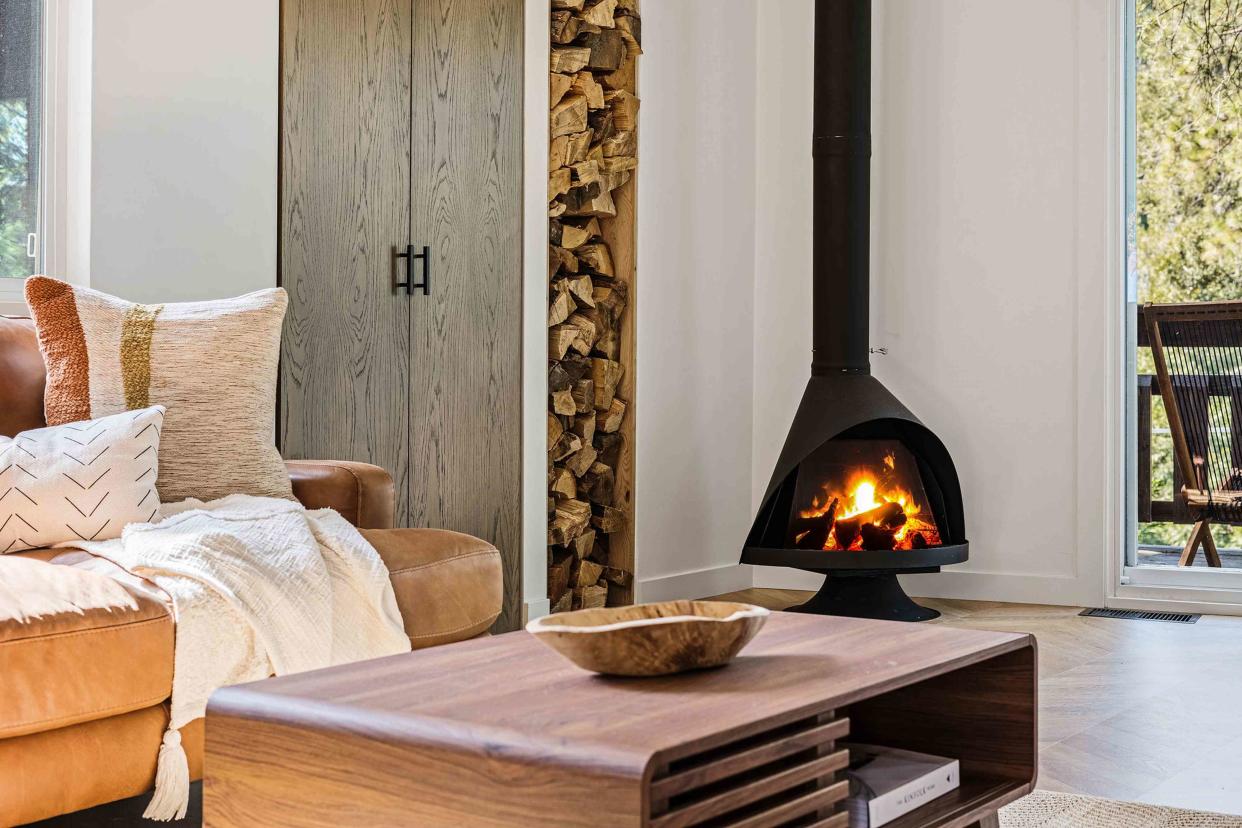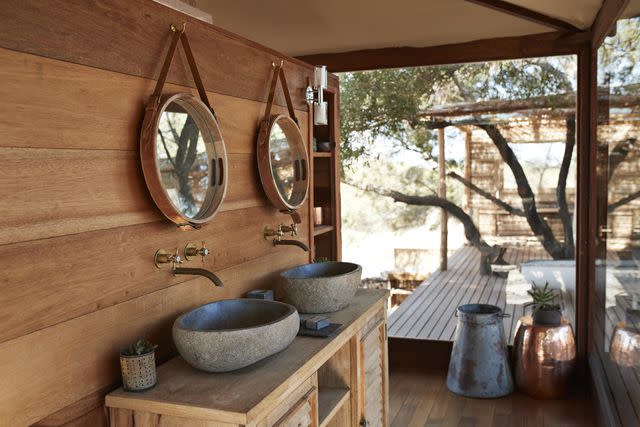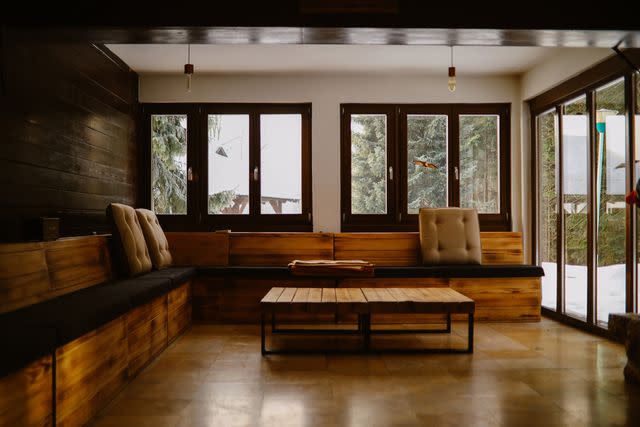The Key Elements of Cabin Interior Design

The Spruce / Alyssa Vela
A cabin is the quintessential place to get away from it all, so it’s no surprise that capturing these relaxed vibes is a growing home design trend. Cabin interior design instantly brings to mind nature-filled scenery, cozy nights gathered around a crackling fireplace, and a feeling of peace and solitude. It is easy to see why this relaxed interior design style is so popular with remote and suburban homes alike.
You don’t have to live in the middle of the woods to incorporate cabin interior design into your home. By focusing on the key elements that make this design stand out, you can emulate the same earthy, comforting vacation vibes in your own home.
This Is How to Design Your Cabin the Right Way, Experts Say
Use Natural Materials
By design, cabins embrace the natural world and offer a cozy, simpler kind of living. An emphasis on using as many natural materials as possible makes these designs feel quaint and earthy. Using materials found locally is even better, as this adds to the built-by-hand feeling that many cabin designs emanate. Think stone fireplaces or stone tiles, wood, concrete, brick, leather, or faux fur.
Wood, in particular, plays a prominent role in cabin interior design. If the wood is raw or exposed, that is even better. Natural or light wood floors, wood cabinets, exposed wood beams, and wood railings and stairs are a perfect way to embrace the outdoorsy cabin feel. By choice or by design you may not incorporate wood materials in these prominent places, but aim to generously add wood details wherever possible, such as wood trim and doors.
Bring the Outdoors Inside
The natural materials mentioned above can easily be used in furnishings, walls, floors, and ceilings. But the natural materials don’t have to stop there. Highlight the natural world by bringing in natural objects of interest to use as cabin décor. Things such as unique rocks or wood pieces, pine cones, feathers, antlers, and pressed flowers or leaves make perfect additions to any cabin design.

Klaus Vedfelt / Getty Images
Function Over Form
Despite their naturally cozy, welcoming feel, the interior design of a cabin is generally not overly concerned with having things look a particular way. Function is more important than form in this style, so be sure to avoid any overly ornate items or pieces that sacrifice function for style. Keep things simple and rustic, highlighting and celebrating each item’s use rather than its looks. This keeps things casual and welcoming, avoiding a stuffy or overly-refined air.
Choose Natural, Earthy Color Palettes
Keep your chosen color theme calm, natural, and earthy. This not only complements the natural materials used throughout the design but flows with any beautiful scenery you may have outside your home. Calm greens, watery blues, rusty oranges, sunset reds, and forest browns are great choices to add subtle hints of color. They also play nicely with the warm neutrals inherently found in natural materials such as wood and stone.

lechatnoir / Getty Images
Fireplaces
What cabin is complete without a crackling fire? Whether it's a wood-burning stove or an electric fireplace, having a fire to gather around adds exponentially to the welcoming, comforting feel of cabin interior design. Try enhancing its presence by framing it in rugged stone or a raw-edged wood mantle to really make it the star of the room.
Use Unique Lighting
Another way to enhance the cozy cabin feeling is by using plenty of lighting. Invite in as much natural lighting as you can, supplementing it with unique light fixtures, such as wood or metal lamps or chandeliers. Rustic outdoor lighting can make an interesting statement piece when incorporated indoors. Lanterns or exposed bulb lights are great for adding to the outdoorsy feel of the cabin design. Candles quickly create a homey feeling in any space, making them another option for ambiance and supplemental lighting.
Layer Textures and Patterns
Layering is a great way to add visual interest and depth to a space. This depth can instantly make a space warm and inviting. And by layering different textures and patterns, a pleasing contrast can be incorporated. For example, use a faux fur throw on a leather couch, then add different throw pillows, such as wool, or sweater pillows. Patterns such as plaid or gingham can be incorporated with solid colors or offer a nice contrast to the organic shapes of wood grain.
Read Next: The 18 Best Places to Buy Home Decor in 2023

